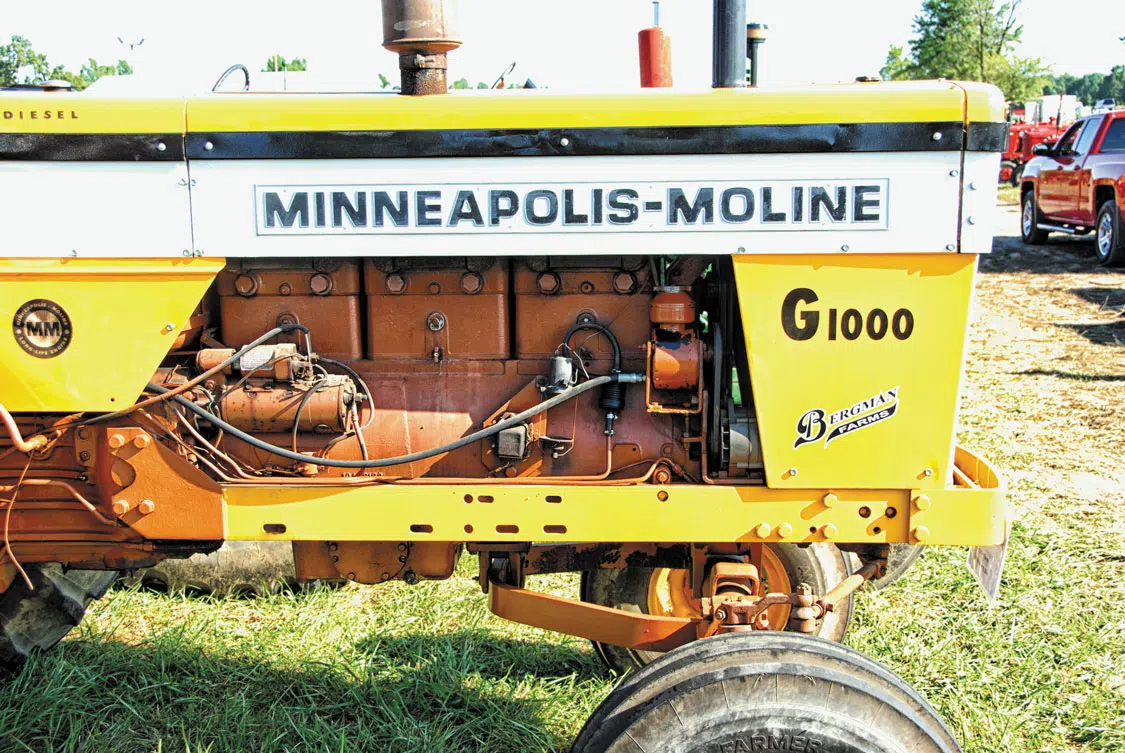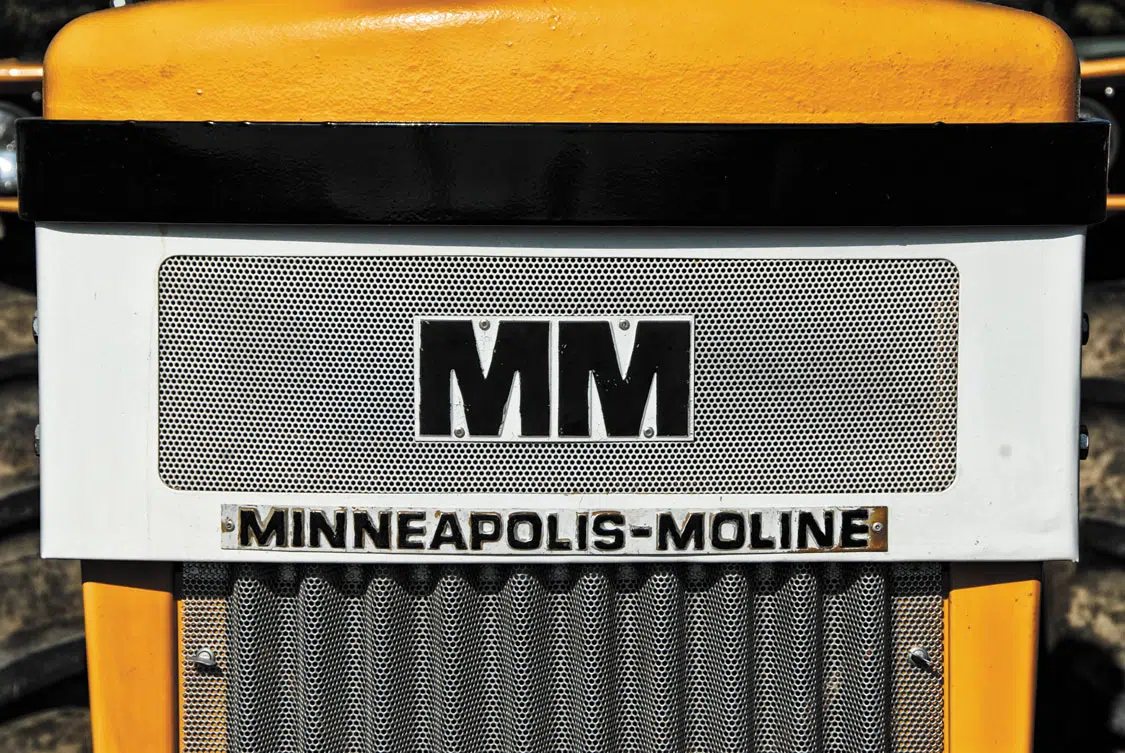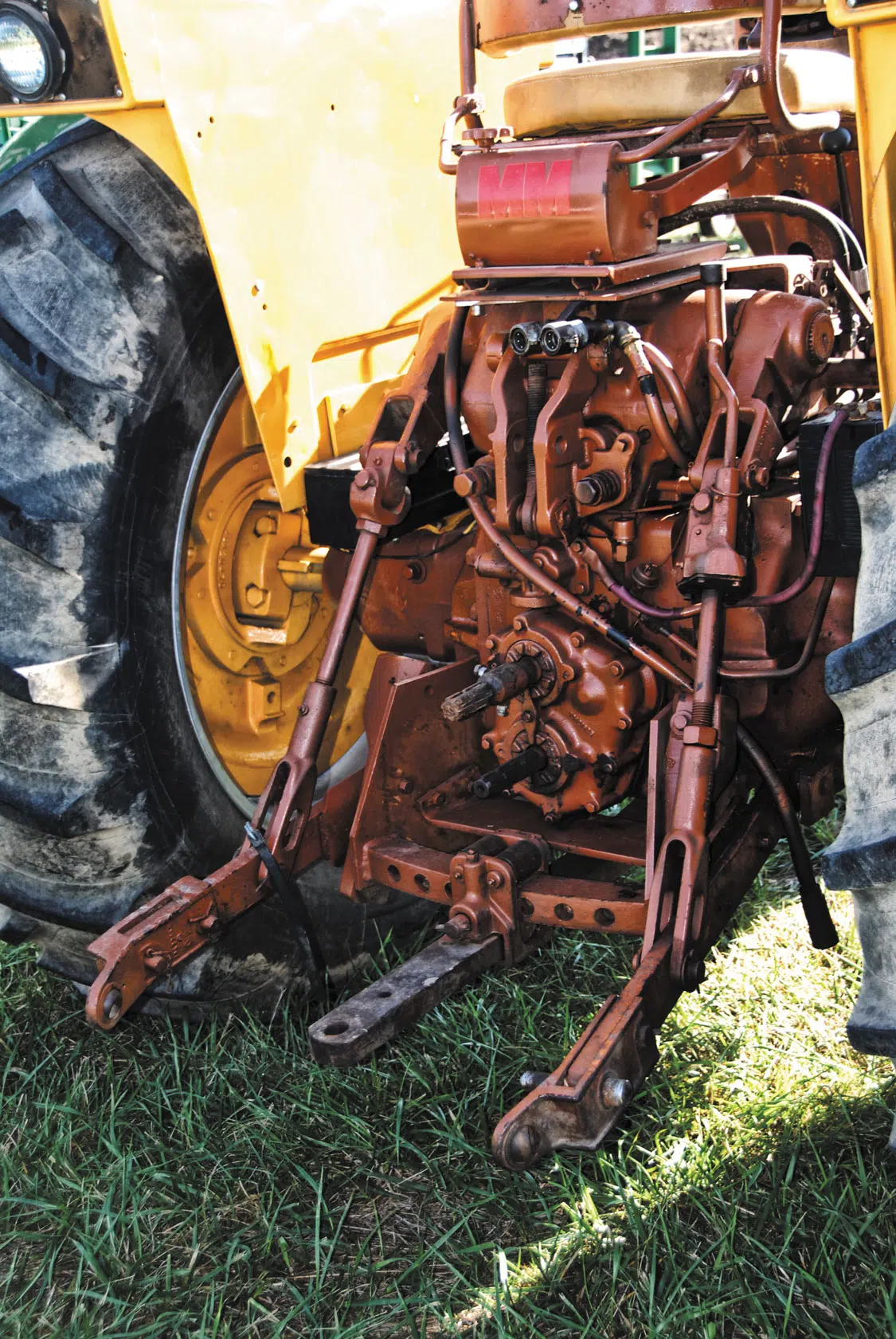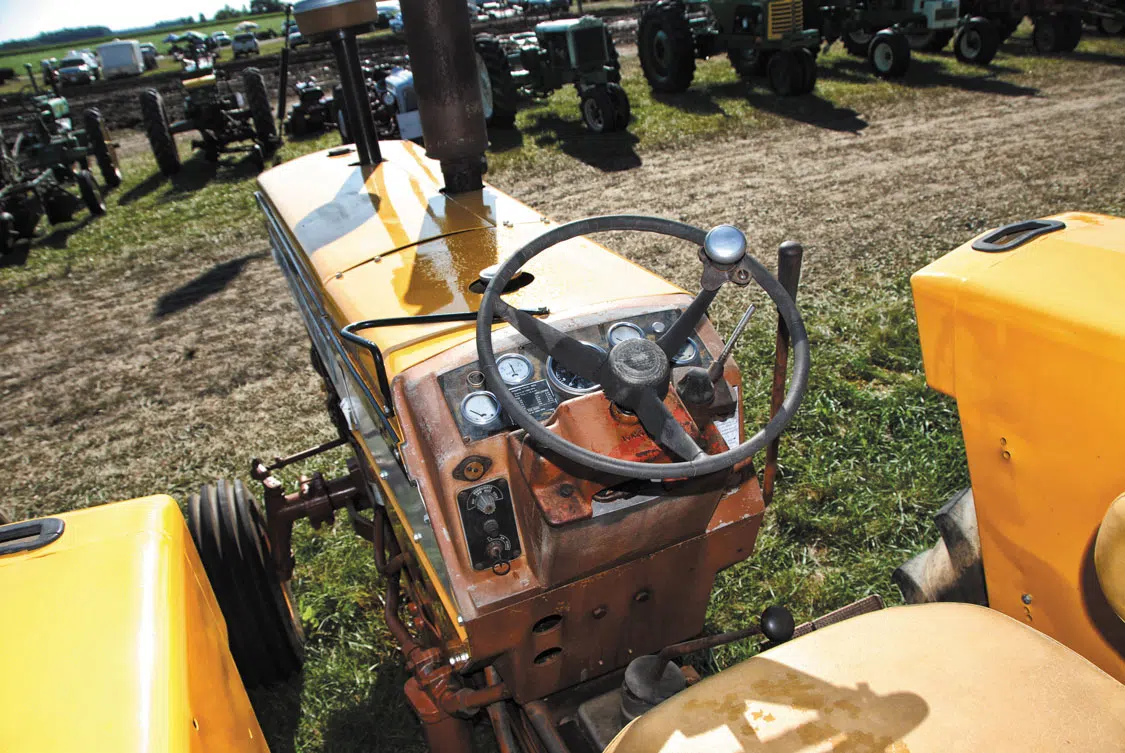 JIM ALLEN
.
June 23, 2023
.
Diesel World
JIM ALLEN
.
June 23, 2023
.
Diesel World

By the mid-1960s, Minneapolis-Moline had a long history of success behind it, but in all that history, they had not yet built a big, six-cylinder-powered row crop tractor. What’s a row crop tractor? Mainly, it means a tractor with an adjustable tread that can be set to match the spacing of the crops. The tractor also usually has a three-point hitch for mounting the implements used in row crop farming. Many row crop farmers need a PTO as well.


In 1965, Minneapolis-Moline built a short pilot run called the G1000 Row Crop in versions fueled by diesel, LPG, and even a few by gasoline. These tractors were tested on farms, and a few changes were made before regular production started in November of 1965. M-M was slow to climb aboard the diesel bandwagon, but that changed once White bought them in 1963. Though their long-running 425ci six had started life in the late 1930s as a gasser, it had adapted well to diesel using the Lanova Power Cell combustion chamber. Updated in 1962 to 504ci with a 3/8-inch bore increase, the D504A-6 gave the new G1000 110 PTO horsepower in a Nebraska test done in November 1966.
The G1000 Row Crop came standard with the Ampli-Torc, which was M-M’s trade name for a torque amplifier to split the gears. It allowed the operator to split each of the main five gears. The G1000 also had standard power steering, a dual-speed PTO, three-point hitch, and good-sized 18.4-34 rear tires. About 1,185 diesel G1000 Row Crops were made between 1965 and 1968—not including the run of 100 pilot models.


Besides the row crop version of the G1000, a Wheatland was available. It had a fixed tread, rounded fenders with full tire coverage, operator close-out guards, Ampli-Torc, and power steering standard. The Wheatland came fueled by LPG or diesel only. Four-wheel drive was available using a Clark front axle. The Wheatland remained in production through 1969, with 2,050 produced—the highest number produced of any G1000 variations.
Starting in late in 1967, the improved G1000 Vista was introduced and soon replaced the G1000 Row Crop. It featured a much-improved operator station isolated with rubber mounts, a tilt/telescope steering column, and new control layouts. Power output was the same, but a three-speed Ampli-Torc was introduced to better utilize it. The brakes went to a hydraulic setup, and a hydraulic boost was added to the clutch. Late in Vista production, closed center hydraulics were introduced. A four-wheel drive was optional. Some 1,610 Vistas were produced.


The G1000 lines were replaced by the G1050s in the latter part of 1969. Not much changed except cosmetics as the White organization gradually morphed the M-M and Oliver lines into a new White brand identity. A few G1050s were rebadged as Oliver 2255s. Production of the G1050 ended at the end of the 1971 model year, which marked the end of this tractor line. The DNA of these tractors went back a long way, but the M-M name was nearing retirement. Most of the old products went by the wayside in favor of all-new White models that consolidated the combined expertise from the M-M, Oliver, Allis-Chalmers, and Cockshutt stables into current farming trends and technology.
1967 Minneapolis-Moline G1000 Row Crop
Engine: 6-cylinder diesel, M-M D504A-6
Displacement: 504ci
Bore & Stroke: 4.63 x 5.00 inch
Flywheel Power: 139 hp @ 1800 rpm
Compression Ratio: 14.3:1
Transmission: 5-speed with Ampli-Torc (5×2)
Weight: 10,700 lbs
Fuel Capacity: 40 gallon
FRONT Tires: 7.50-16
Rear TIRES: 18.4-34
*As Rated by Nebraska Tractor Test 953
Floyd County Historical Museum
FloydCountyMuseum.org
Michigan Moline
MichiganMoline.com
Share Link